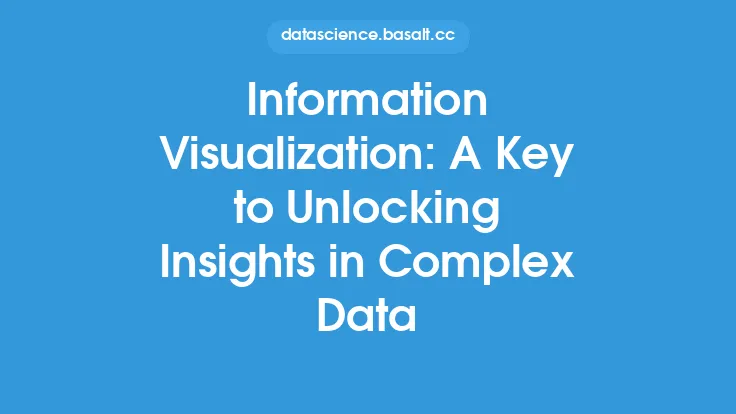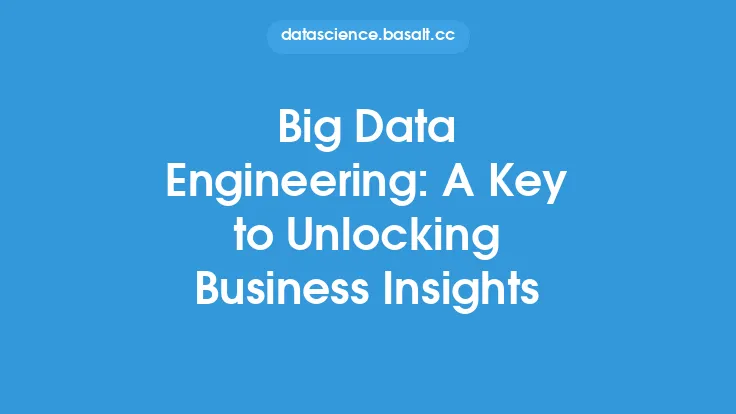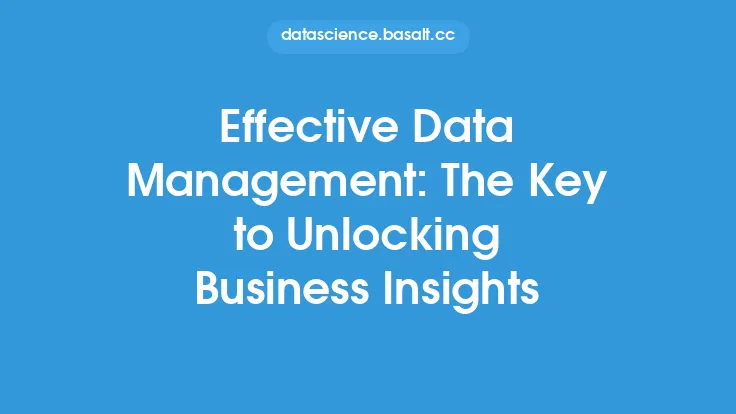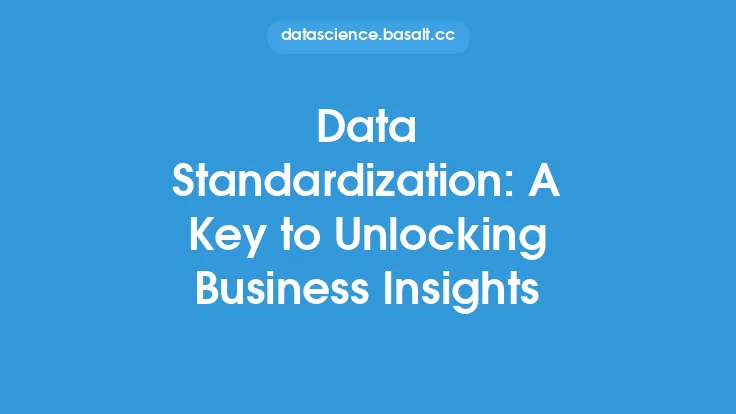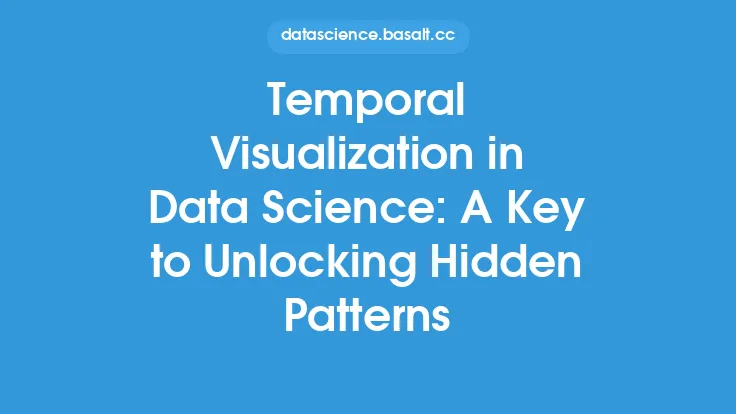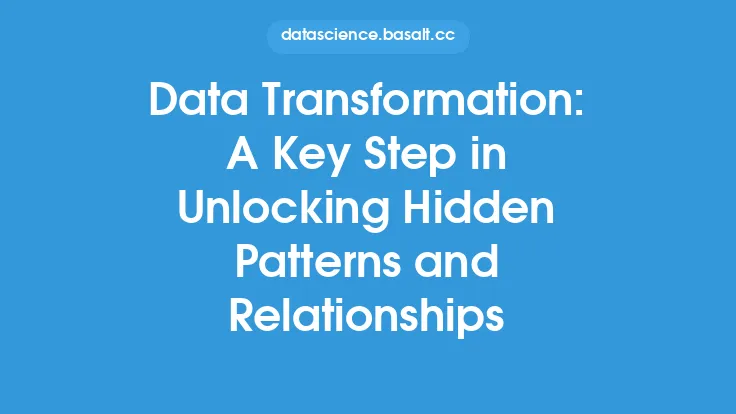In the realm of data governance, data standards and data integration are two crucial components that work in tandem to unlock valuable insights from an organization's data assets. As the volume, velocity, and variety of data continue to grow, the need for standardized data formats and seamless integration becomes increasingly important. This article delves into the world of data standards and data integration, exploring their significance, benefits, and technical aspects, as well as providing guidance on how to implement them effectively.
Introduction to Data Standards
Data standards refer to the set of rules, guidelines, and protocols that govern the collection, storage, and exchange of data within an organization or across different systems. These standards ensure that data is consistent, accurate, and reliable, making it possible to integrate and analyze data from various sources. Data standards can be categorized into different types, including syntactic, semantic, and pragmatic standards. Syntactic standards focus on the format and structure of data, while semantic standards deal with the meaning and interpretation of data. Pragmatic standards, on the other hand, concern the context and usage of data.
The Role of Data Integration
Data integration is the process of combining data from multiple sources into a unified view, enabling organizations to gain a comprehensive understanding of their data assets. Data integration involves several techniques, including data warehousing, data virtualization, and data federation. Data warehousing involves storing data from various sources in a centralized repository, while data virtualization provides a virtual layer to access data from different sources without physically moving it. Data federation, on the other hand, enables the integration of data from multiple sources in real-time.
Benefits of Data Standards and Data Integration
The implementation of data standards and data integration offers numerous benefits to organizations. Some of the key advantages include improved data quality, increased data consistency, and enhanced data sharing. Standardized data formats enable organizations to reduce errors and inconsistencies, while data integration provides a unified view of data, making it easier to analyze and gain insights. Additionally, data standards and data integration facilitate data sharing and collaboration across different departments and systems, promoting a culture of data-driven decision-making.
Technical Aspects of Data Standards and Data Integration
From a technical perspective, data standards and data integration involve several key technologies and techniques. Data standards are often implemented using metadata management tools, which provide a centralized repository for storing and managing metadata. Metadata management tools enable organizations to define, manage, and enforce data standards across different systems and applications. Data integration, on the other hand, involves the use of integration platforms, such as enterprise service buses (ESBs) and integration brokers, which provide a framework for integrating data from multiple sources.
Data Standards and Data Integration in Practice
In practice, data standards and data integration are applied in various industries and domains. For example, in the healthcare sector, data standards such as HL7 (Health Level Seven) and FHIR (Fast Healthcare Interoperability Resources) enable the exchange of patient data between different healthcare providers and systems. In the financial sector, data standards such as XBRL (eXtensible Business Reporting Language) facilitate the exchange of financial data between companies and regulatory bodies. Similarly, in the retail sector, data integration enables organizations to combine customer data from various sources, such as social media, customer relationship management (CRM) systems, and loyalty programs, to gain a unified view of customer behavior and preferences.
Challenges and Opportunities
Despite the benefits of data standards and data integration, several challenges and opportunities arise. One of the key challenges is the lack of standardization across different industries and domains, which can hinder data exchange and integration. Additionally, the increasing volume and variety of data pose significant challenges for data integration and analysis. However, these challenges also present opportunities for innovation and growth. For example, the use of artificial intelligence (AI) and machine learning (ML) can help automate data integration and analysis, while the adoption of cloud-based technologies can enable scalable and flexible data integration solutions.
Best Practices for Implementing Data Standards and Data Integration
To implement data standards and data integration effectively, organizations should follow several best practices. First, they should establish a clear data governance framework that defines data standards, policies, and procedures. Second, they should invest in metadata management tools and integration platforms to support data standards and data integration. Third, they should develop a data integration strategy that takes into account the organization's data assets, systems, and applications. Finally, they should provide training and support to employees to ensure that they understand the importance of data standards and data integration and can apply them effectively in their daily work.
Conclusion
In conclusion, data standards and data integration are essential components of data governance that enable organizations to unlock valuable insights from their data assets. By implementing data standards and data integration, organizations can improve data quality, increase data consistency, and enhance data sharing. While several challenges and opportunities arise, following best practices and investing in the right technologies and techniques can help organizations overcome these challenges and achieve their data-driven goals. As the volume, velocity, and variety of data continue to grow, the importance of data standards and data integration will only continue to increase, making them a critical aspect of any organization's data governance strategy.
